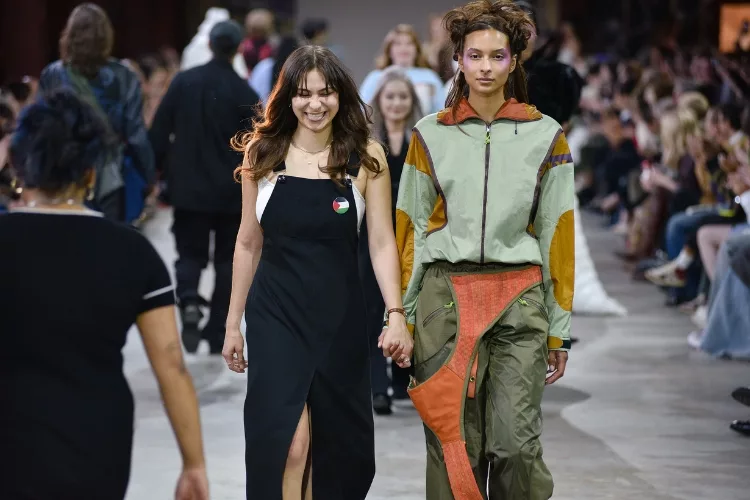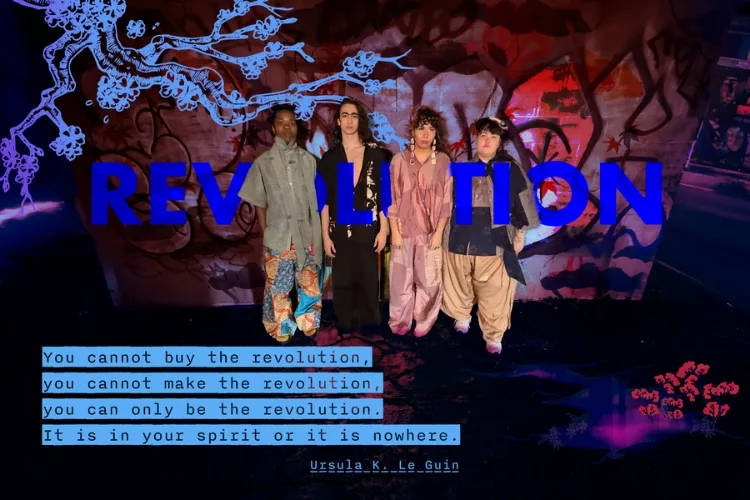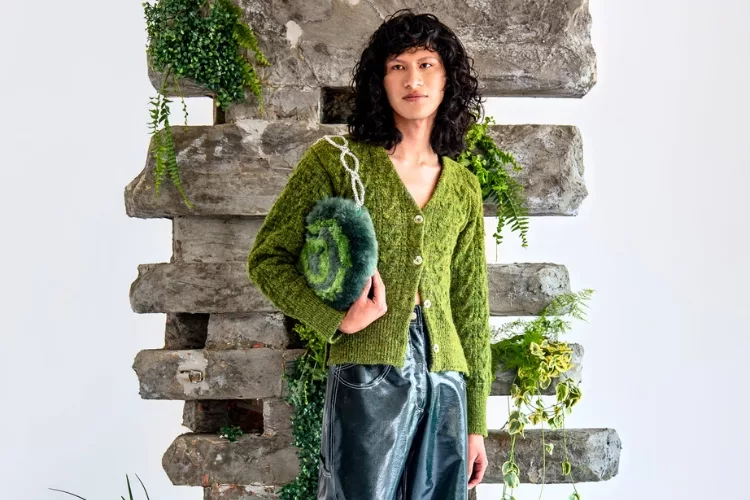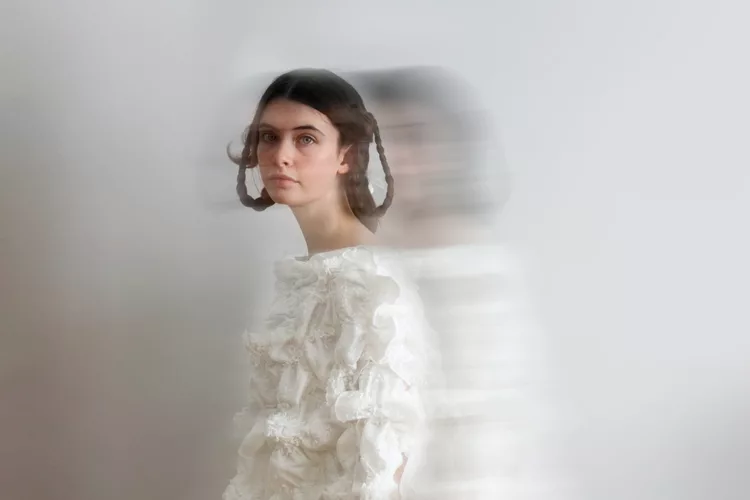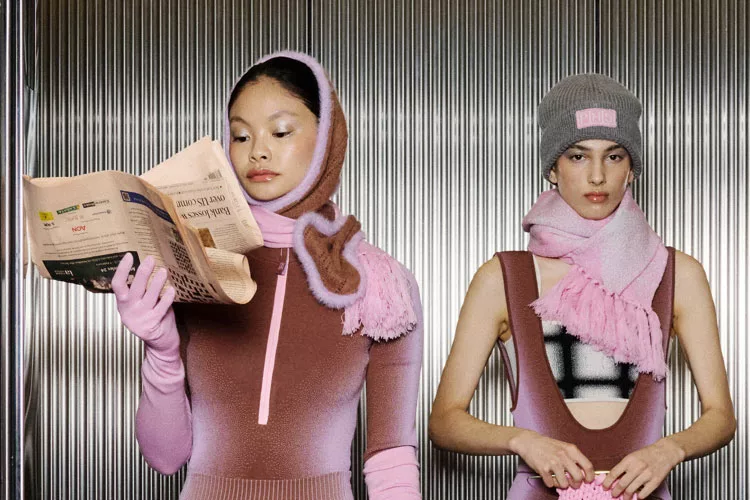A continuing look at our favorite shows from SS24 #CPHFW (missed Part 1? Find it HERE)
Paolina Russo
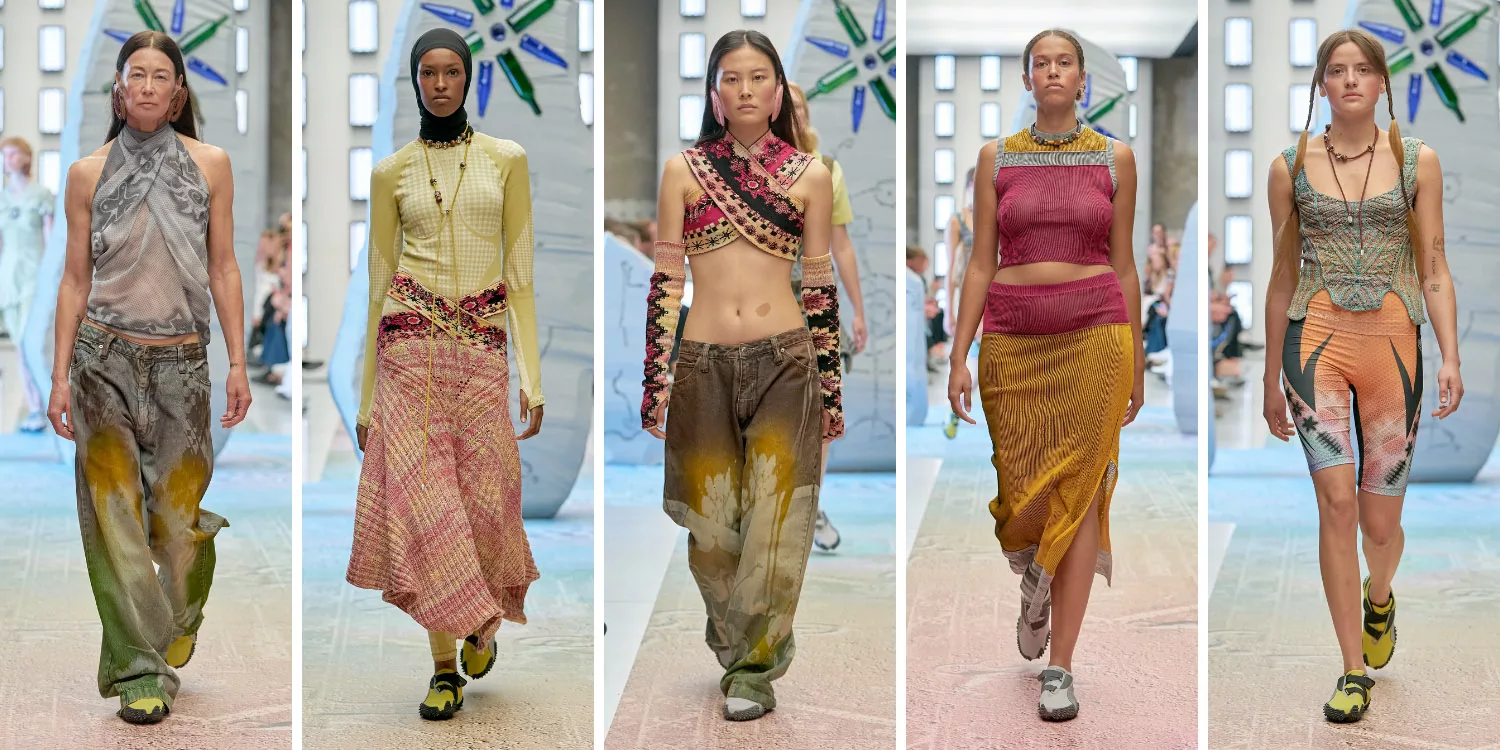
You want a timeless wardrobe and Paolina Russo wants to change the game. Projecting both audacious style and ephemeral substance, the London design team is fueled by futuristic nostalgia.
High voltage label Paolina Russo delivers an industrial shock to the system. Fusing futuristic and nostalgic wires, the London design team Alex Russo and Lucile Guilmard power their latest collection ‘Monolithics’ beyond the Copenhagen atmosphere to a trippy new plane. Exploring this remote reality, we are struck by looks suspended in subversive motion. Blissfully offbeat, discoveries such as the gradient denim are truly eye-catching and inviting as you gaze at the diversely shining stars.
On the runway, we follow the narrative travels of the interstellar warrior heroine as she traverses the planar landscape in search of lost time. We see floral insignia airbrushed and laser-etched like ancient carvings. We see this season’s iterations intentionally lack hardware and are fashioned from unembellished, lightweight cotton monofiber yarns that render them completely biodegradable. Even athletics are elevated in pastel florals. What we don’t see is the generic –while initially skeptical due to the inclusion of 2023 trends, we believe these artifacts can defy the trend cycle’s ravages due to their intricately calibrated vision.
Equally suitable for a pop star and an athlete from another world, the Zalando Visionary Award heightens the traditional alongside current aesthetics. We have found fusions such as floral dead stock shorts and a knit corset top captivating for their off kilter perspective, a nonchalant alien princess hovering over the heads of micro-trend influencers. The relics of previous generations may seem unworldly to our eyes, but ‘Monolithics’ codes them into novel form.
Notes on Sustainability
Paolina Russo is committed to creating clothing that is both environmentally responsible and aesthetically exciting. Through experimentation and the development of new making processes, they prioritize transparency and the traceability of raw materials.
In addition, they are reshaping traditional production methods, involving manufacturers in the design process as a way to stimulate production and textile innovation. To reduce the environmental impact and optimize resources, the brand uses dead-stock materials, engages in conscious sourcing, partners with certified manufacturers, and uses natural fibers which are entirely biodegradable.
Latimmier
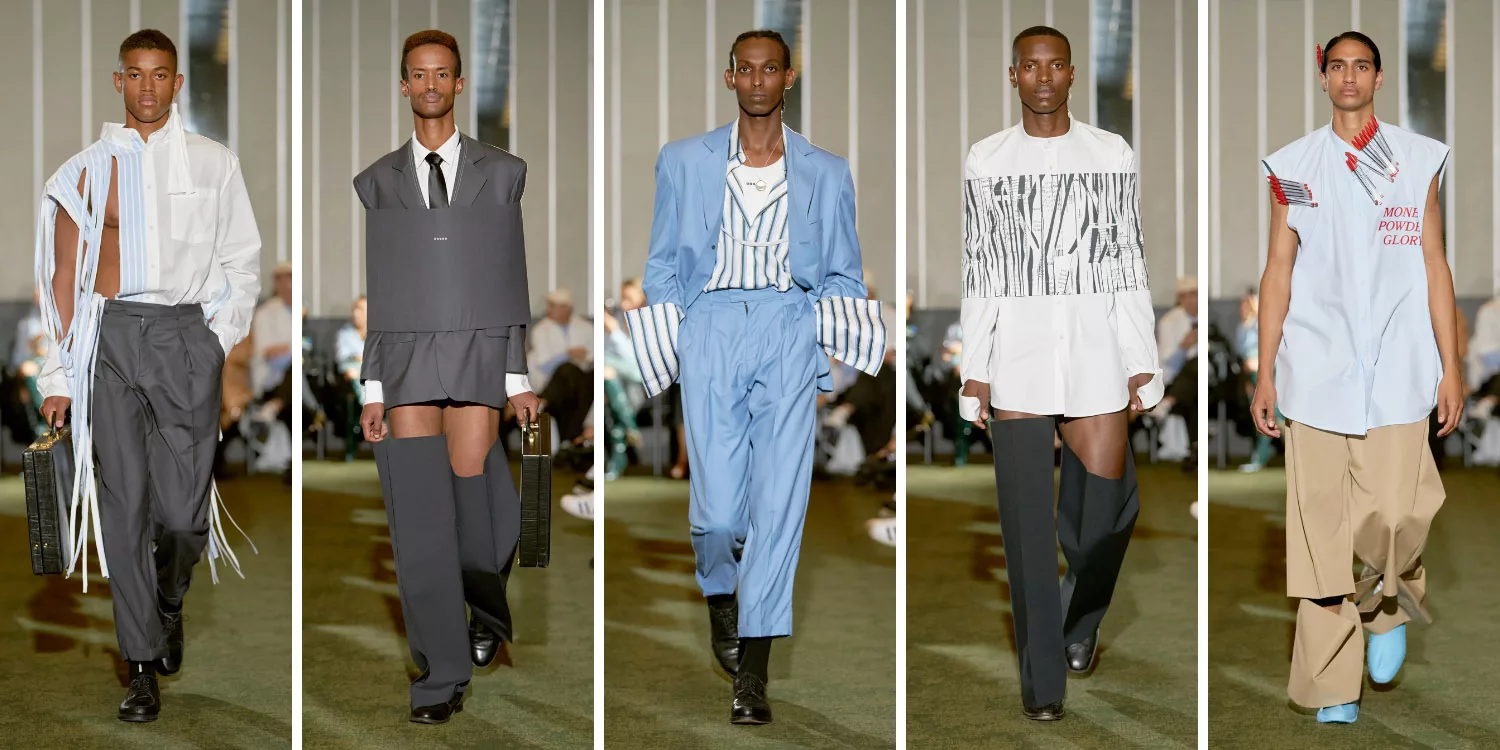
If money is the anthem of success, Latimmier knows the words by heart. By remixing masculine artifice to challenge stereotypes, the label’s rendition has proved a smash hit.
If you aspire to be the smartest dresser in the room, take lessons from the class of Finnish label Latimmier. Rather than dulling your sensibilities with quiet luxury, Latimmier dismantles the status quo with savagely cerebral poise. Within ‘Positions of Power’, the performance of masculinity is off Wall Street and onto the catwalk.
Money, powder and glory. We never thought we would see the day where Patrick Bateman could conceivably wear a mini skirt, but the workwear elements untwist societal standards for male dressing into free flow. Queer and nonconforming men can wear lingerie under their coats, pinstripes and a tie along with a corset that resembles a straitjacket. Other garments are deconstructed at the ends and printed with debt collection invoices. The implicit suggestion seems to be that corporate America, which historically excluded the gay community from powerful positions, is unraveling at the seams.
As a critique of Wolf of Wall Street-esque materiality and an exploration of the contradictions hidden behind a masculine display, ‘Positions of Power’ ensures the wearer looks mad, bad and dangerously defiant. Tearing up the dull boardroom dominated by straight and white complacence, we are taking notes. Let’s see Paul Allen’s miniskirt.
Notes on Sustainability
At Latimmier sustainability is a prerequisite. For the FW23 season some 65% of all materials used were recycled or certified sustainable. The rest, while not certified, were of natural origin, such as wool, silk and leather. All of the brand’s production, including fabrics, hardware and garment production, are located within the EU. In the spring of 2023 the brand released their sustainability standards and objectives, including a thorough sustainability report – all available on their website.
Furthermore, for Latimmier ecological sustainability goes hand in hand with social sustainability. As a brand rooted in POC queer culture, it is important for Latimmier to uplift queer and POC creatives. This also means focusing on the unsustainable norms of the industry, such as long work hours and free internships – Latimmier does not support free internships and has implemented a 4-day work week for interns and full-time staff members.Furthermore, Latimmier argues that sustainable design is not enough. In the times of fast fashion and overconsumption, fashion needs a deeper purpose that justifies its existence.
TG Botanicals
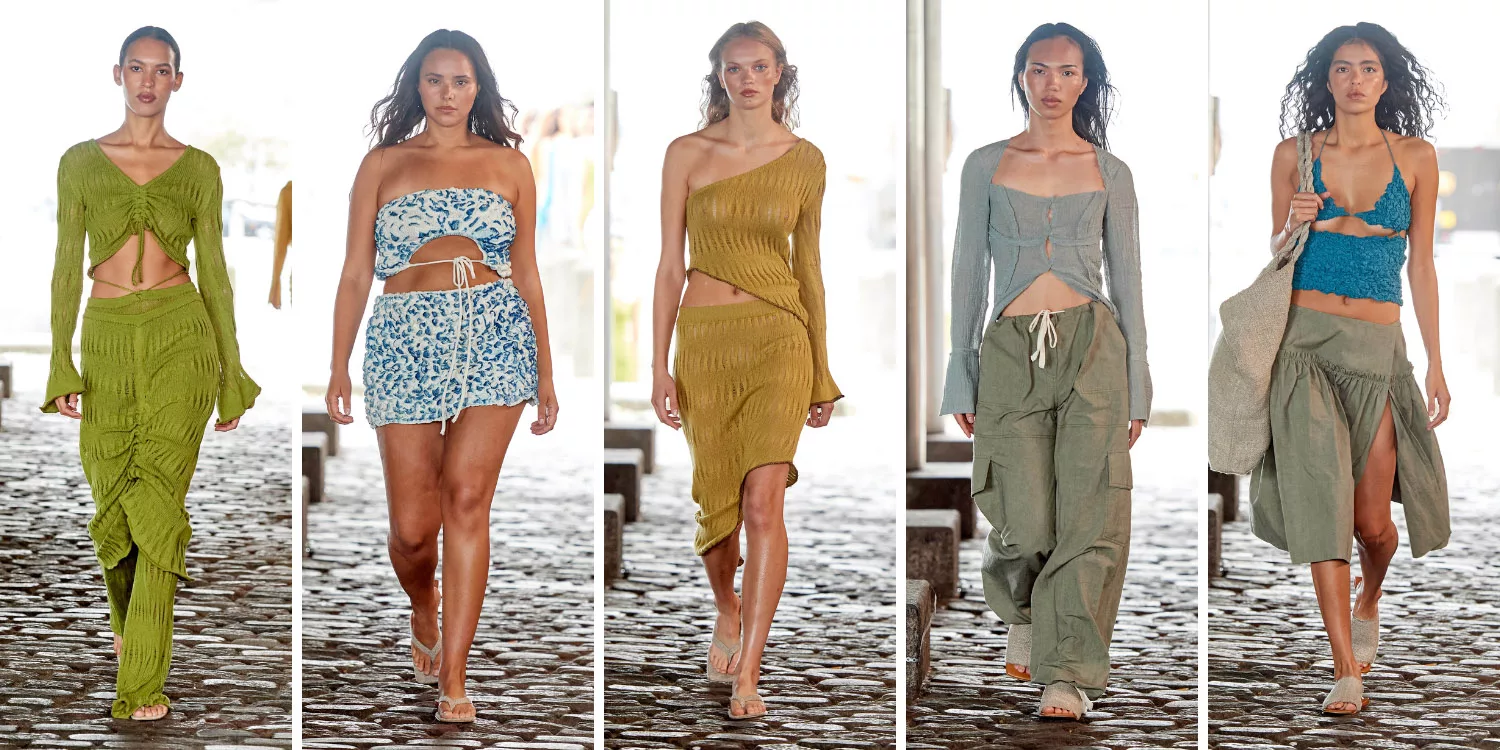
TG Botanical’s latest collection reflects a continued joy and daring, rooted in the frailty of being and matter, reminiscent of eroded metal and the Earth’s scarred surface. Chaotically stitching with an elastic thread, Tetyana Chumak conjured garments both fluid and kinetic, reflective of transience and impermanence. While colors remain based in earthy tones, cyanotypes create a specific blue that play brashly off moments of ocher. And newly added accessories, sourced from local artisans and made from old nettle cloth in limited numbers, perfectly compliment the aesthetic.
Notes on Sustainability
The name of the brand speaks for itself – these are clothes from the environment, from botany. In each collection TG Botanical team plays with the elements of nature. This is reflected not only in the use of eco-materials and special herbal dyeing techniques, but also in the textures/patterns of the products.Thanks to the occupation of her family (farmers), Tatiana has an opportunity to research technologies for the production of fabrics from nettle, flax, hemp and control the manufacture of products.
This is why TG Botanical items are considered as “live clothing”, because the creation of each piece takes its way from the moment the first sprouts appear on the moist soil of Ukrainian fields to ready-made garments in the brand’s studio.TG Botanical team uses experimental techniques for dyeing fabrics with plant pigments obtained from tansy flowers, acorns, onion husks and coffee beans.
Deadwood
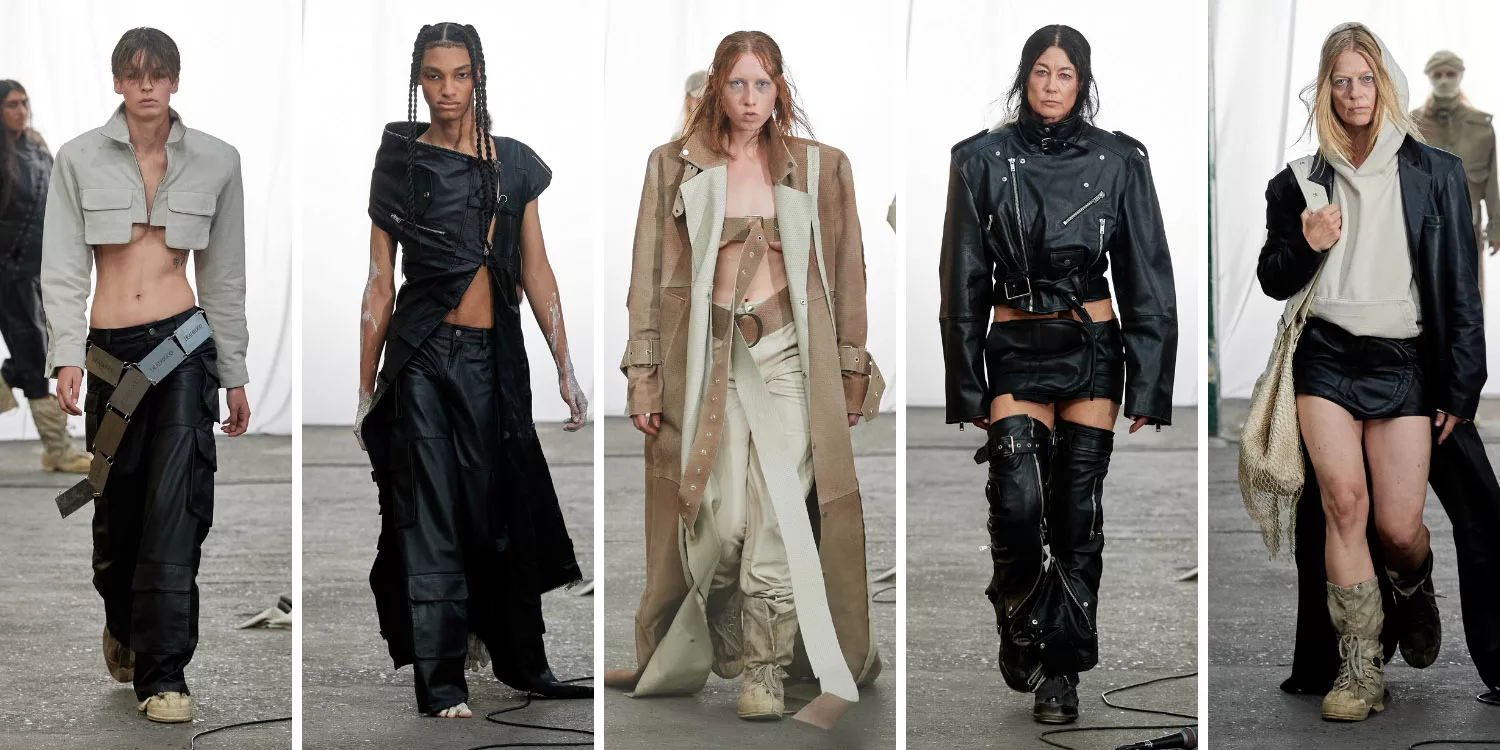
Deadwood, the the Stockholm based brand founded in 2012 by Carl Ollson and Felix von Bahder – presented its first ever runway show this year. In many ways, this brand, the result of two friends sharing a vision of challenging the status quo, is the future of fashion and what Copenhagen Fashion Week calls for. The core idea was simple; garments and accessories made from materials that otherwise would have gone to waste. We’re not saying this is radical. What we do see is that these creatives have understood for well over a decade, the paradoxes present in making something “new” while adapting to the reality of “now”. So it was no great leap that the collection was a bit on the dystopian edge, alluding to drought and desertification. But where there’s dark, there’s also a suggestive beauty of our resilience and adaptability.
Notes on Sustainability
A decade ago Deadwood set out on a journey to build a slowevolving collection where interesting uses of materials would always be central. From first reworking vintage garments Deadwood went on to offer a range of products from upcycled waste leather. In 2020 a vegan line was launched made from cactus leather, and since then Deadwood has introduced a number of innovative materials such as fleece, aluminum and cotton jersey all made from recycled waste. For FW23 the brand will widen its horizons further with the injection of a denim line consisting of unisex styles with a contemporary design and fit, all made from deadstock and recycled materials.
Stamm
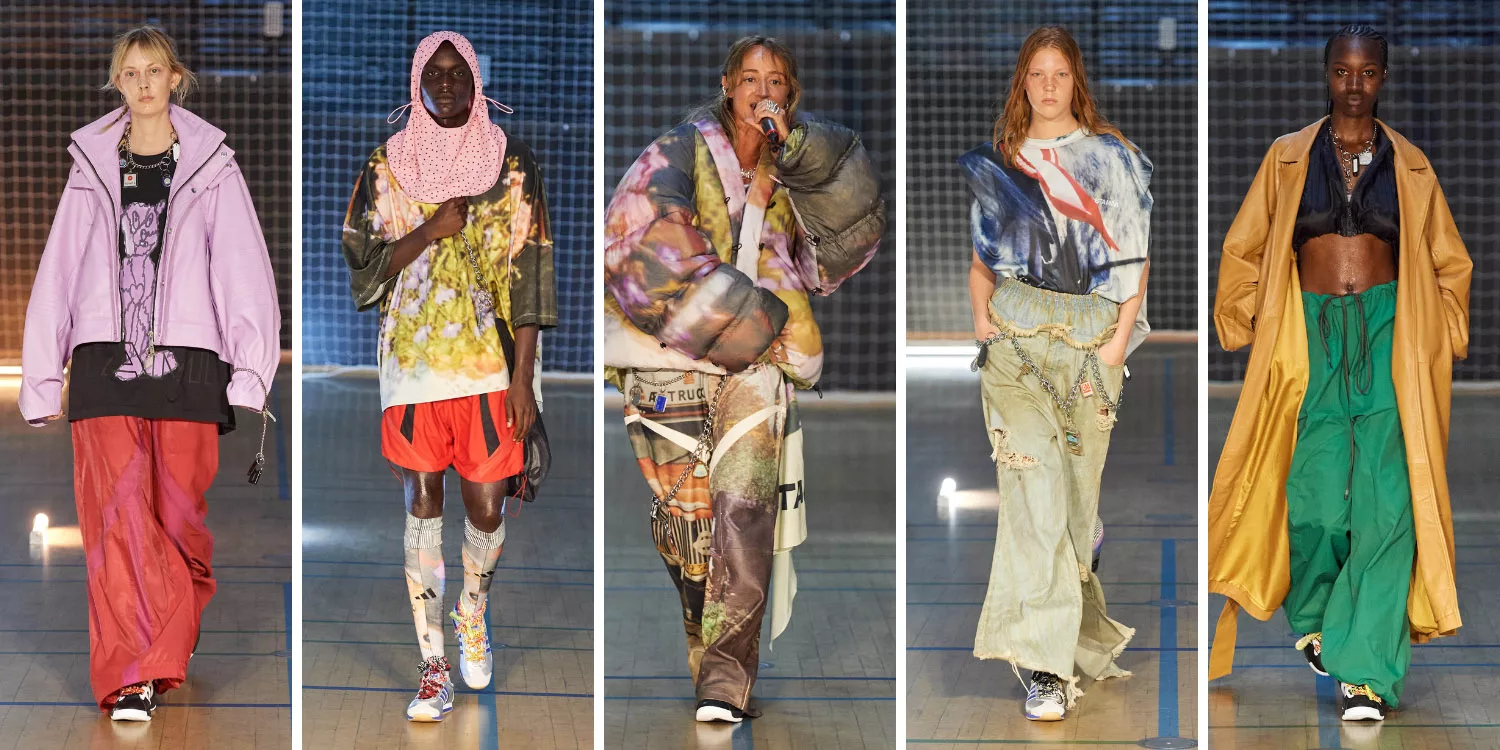
Elisabet Stamm mined her childhood for inspiration. Digital photos were blown up and printed on fabric and many silhouettes were oversized as though made for a girl who wanted to disappear within them. Sophisticated they’re not, but the super wide leg pants and voluminous…everything! is definitely having a moment. A soundtrack by her friend, the French producer Princ€, and a live performance by Scandinavian-Syrian rapper Silvana Imam, reinforced the youthful vibe that was unique to CPHFW.
Notes on Sustainability
The unique designs are created for longevity and made with consciously sourced materials, of which origin, craft and general existence are carried forward with transparency and traceability.
Stamm incorporates materials and practices in the structure where crafted handmade, naturally processed Indian fabrics meet recycled man made fabrics – an approach and expression of crossways. Stamm works only with RDS certified goose down filling and as a new initiative natural kapok fibre is introduced as filling. The brand was also the winner of the ZSA Zalando Sustainability Award fall FW23.
Related Articles

